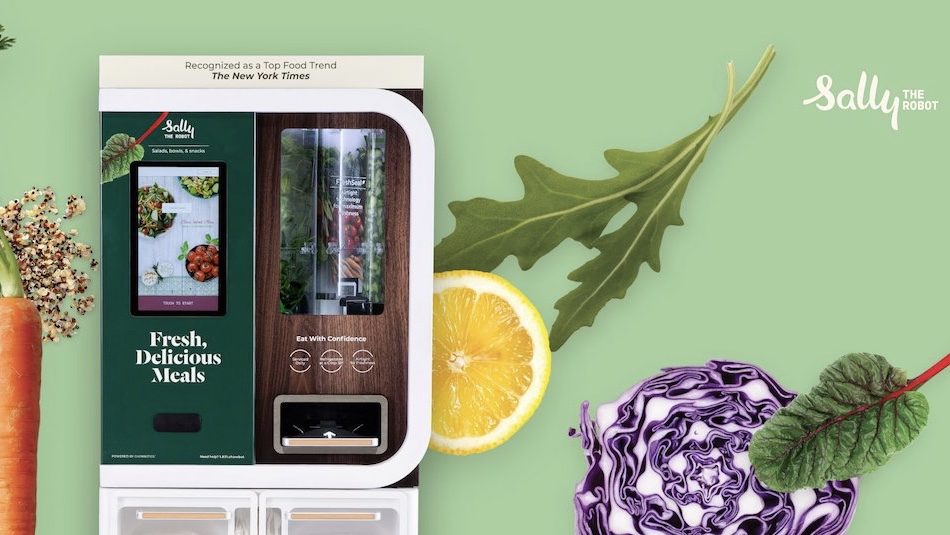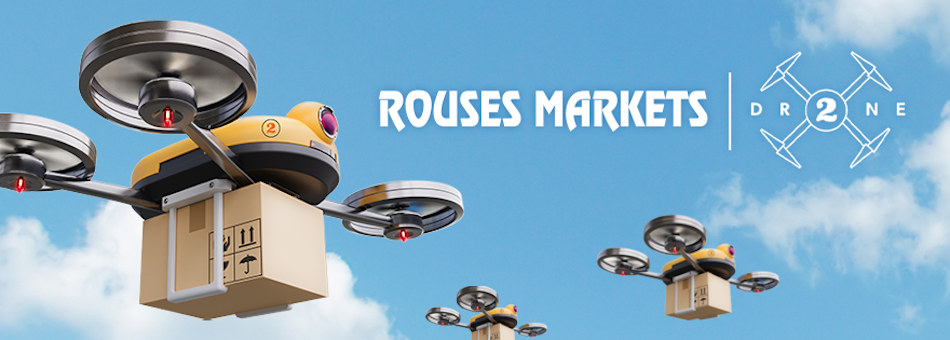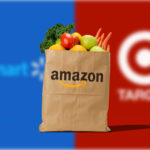
The Mother of Invention: Pandemic Induced Innovation in the Food Industry

 If necessity is the mother of invention, then the pandemic has produced the mother of all necessities. Innovation has accelerated to levels never even dreamed of in the retail food industry because rapid and dramatic change is currently essential to survival. Forty-five percent of consumers have changed at least one brand preference since the pandemic started. And 62% say they expect their brand preference to change permanently by the time the pandemic ends.
If necessity is the mother of invention, then the pandemic has produced the mother of all necessities. Innovation has accelerated to levels never even dreamed of in the retail food industry because rapid and dramatic change is currently essential to survival. Forty-five percent of consumers have changed at least one brand preference since the pandemic started. And 62% say they expect their brand preference to change permanently by the time the pandemic ends.
With that kind of upheaval, it is no wonder that Mattson reports new product development has not been slowed by the pandemic. Retailers are responding to the rapidly evolving marketplace with constant innovation too. Here’s a look at some of the more intriguing changes amongst food retailers and manufacturers/suppliers over the last few months.
The Most Intriguing Changes Among Food Retailers & Manufacturers
The last few months have been chock-full of change. Have you taken note?
Stores grapple to find ways to profitably meet consumer demand for grocery delivery or pickup.
Stores will do whatever it takes to reach their consumers. Rouses Markets, a 64-store independent grocer on the Gulf Coast, is testing the use of drones to deliver customers’ orders. The project is being conducted in partnership with Deuce Drone, which claims the system will allow brick-and-mortar stores to compete efficiently with pure e-commerce players.
 Not that direct-to-consumer (DTC) brands are finding it easy to achieve profitability in this environment either. Part of these brands’ problem is that the minute a consumer looks up an item, they will get three or four ads from competing products. This forces all players to plow a big chunk of their budgets into marketing dollars. For instance, dog food supplier Chewy had a sales increase of 46 percent in the February-April quarter this year, but their losses grew 62%. One way to ameliorate high customer acquisition costs is convincing the customer to sign up for recurring purchases. The subscription model ensures ongoing sales without the need for more marketing support. Chewy reports that its auto-ship customer base increased 48% year-over-year. In fact, 38% of U.S. shoppers signed up for an online subscription order in April and May – half of them being first-time subscribers.
Not that direct-to-consumer (DTC) brands are finding it easy to achieve profitability in this environment either. Part of these brands’ problem is that the minute a consumer looks up an item, they will get three or four ads from competing products. This forces all players to plow a big chunk of their budgets into marketing dollars. For instance, dog food supplier Chewy had a sales increase of 46 percent in the February-April quarter this year, but their losses grew 62%. One way to ameliorate high customer acquisition costs is convincing the customer to sign up for recurring purchases. The subscription model ensures ongoing sales without the need for more marketing support. Chewy reports that its auto-ship customer base increased 48% year-over-year. In fact, 38% of U.S. shoppers signed up for an online subscription order in April and May – half of them being first-time subscribers.
However, the difficulty of creating profitable customers with DTC is not deterring new categories from entering the fray. A company called SnackMagic was started by Stadium, which ran a group delivery lunch service until the pandemic dried up office lunch orders. They quickly switched to offering consumers a mix of well-known brands and new or unusual brands, all in the snack category. The average order contains 17 snack products, and despite being less than three months old, they have already shipped 30,000 orders.
In a similar space, DoorDash, one of the leaders in delivering restaurant meals, just launched DashMart. Rather than focusing just on foodservice or supermarket items, DashMart offers consumers an array of packaged foods, convenience store items and local restaurant meals delivered within 30 minutes. Available in eight cities as of August 2020, plans are to expand into five more cities in the coming months.
In a move to capitalize on the dramatic increase in plant-based foods, VEDGEco, a vegan wholesaler, has announced plans to sell direct-to-consumers as well.
And while it may not be an innovation exactly, Target is finally adding grocery items to its pickup service. They will roll the program out to 1,500 stores this winter. The impetus for this long-awaited change was that online grocery shopping jumped 9% from May to June.
Consumer focus on healthier eating and greater awareness of sourcing, sustainability, environmental and food chain issues grows.
Raley’s has responded to this consumer trend in dramatic fashion by opening its new format Raley’s O-N-E Market in Truckee, California, at the end of June. The store has a meat department with no antibiotics or hormones, only sells sustainable seafood and emphasizes organics in every department. The store includes a juice bar serving organic fresh-pressed juices, smoothies and açaí bowls, along with wellness shots. Their loyalty card program has expanded to include Something Extra Health, which offers personalized nutrition counseling.
In Europe, Ahold has launched a new format that has a hybrid prepared foods / deli section that also includes value-added packaged fruits and vegetables and fresh fruit juices.
Meijer has partnered with greenhouse grower Revolution Farms to shorten their supply chain. Now Meijer will be able to source locally grown lettuce and greens for their Ohio stores year-round. Revolution Farms added two acres of greenhouse and now distributes 1.5 million pounds of greens a year.
Aldi continues to revamp its stores as it aggressively plans a $5 billion expansion, including opening 70 new stores this year. They have increased their fresh food selection by 40%, including new produce, meat and organic options.
Publix has responded to the pandemic by helping both farmers and food banks. By early July, they had purchased more than 5 million pounds of produce from local farmers to deliver to Feeding America.
Tops Markets has done its part for the environment by switching from foam or plastic trays in the produce department to biodegradable alternatives. And they have redoubled their commitment to the use of local produce suppliers wherever possible. Giant Food has vowed to ensure that by 2025, 90% of all waste from their stores will be either recycled, reused or, for food that is pulled from shelves before it is unfit for sale, donated.
A consortium of retailers who are usually fierce competitors have launched a program to find a replacement for the ubiquitous plastic bag, which has seen a resurgence since COVID-19 concerns made reusable bags less desirable.
Innovations that can reduce environmental impact are not being overlooked in the supply chain either. Self-driving trucks are being developed for introduction in 2024. And energy-efficient container ships from Del Monte are helping reduce fuel consumption.
Food manufacturers respond to consumers’ desire for healthier options and planet-saving efforts.
Food manufacturers’ responses include everything from packaging changes to more plant-based products. And with more home cooking, manufacturers are also offering products that mimic restaurant-style meals. Best Foods Drizzle Sauces are being introduced with the positioning that they are for people “craving restaurant flavors.” Kraft learned of a home-cooking pandemic trend that showed that parents were feeding their kids mac ‘n’ cheese for breakfast, so they released limited-edition packaging and a consumer promotion to reinforce the trend.
There’s still time!#KMCforBreakfast + #Sweepstakes! When you tweet, @kraftmacncheese will donate 10 boxes of Mac & Cheese to us. https://t.co/XEEbXPBep0
— Feed the Children (@feedthechildren) August 7, 2020
Also on the healthier eating front, Chobani came out with a line of probiotic beverages and Chobani Complete (lactose-free yogurts with extra protein and amino acids). They also added a PB&J flavor to their flagship line with all profits going to Feeding America.
The push for plant-based meat and dairy alternatives, which was underway well before the pandemic struck, has moved into overdrive.
Are you in the mood for a 3D-printed steak? It may take a while to get to your local supermarket, but such a thing is going into testing in European restaurants this year.
Maybe cell-based chicken is what you are looking for? If it sells at KFC in Russia, no doubt it will be in supermarkets soon. This product combines plant-based material with live, cultivated chicken cells.
Another product in the research phase is a meat substitute based on wood, which would be used instead of soy or pea protein.
The pandemic is good for some businesses. Plant-based meat sales were up over 200% in the four months ended June 20.
Another brand making a sharp turn in response to the pandemic is healthy snack line Dirt Kitchen from Mondelez. Just going into test in February, they quickly changed to an e-commerce strategy. By building their own site they were able to continue their “test market” and actually gather data on users’ preferences faster and in more detail than they could have in a traditional test.
In the English Midlands, Asda has launched “Asda Food Boxes,” which deliver 18 fresh fruits and vegetables to customers. Asda claims it is the best value around and will encourage healthier eating.
At a time when many consumers are concerned with the quality of the meat they buy, a company called FoodID has developed a test for antibiotics that can be used by meat plants to ensure that the meat they are processing is as clean as vendors claim.
COVID-19 fears drive consumer desire for contactless shopping.
Amazon realized the technology for their Amazon Go stores, which charges customers as they pick items off the store shelf, would not work with the wider variety of items, including fresh produce, they will carry in the larger supermarkets they are planning on opening soon. For their Woodland Hills, California, store, they have developed the Dash Cart: a shopping cart with cameras, sensors and a smart display. The customer is charged when they remove the shopping bag from the cart, which also eliminates checkout lines. Presumably the carts will be used at the new stores they are planning for Philadelphia too.
🕒 Quick grocery trip
🛒 Smart shopping cart
✅ Skip checkout linesOur new Amazon Dash Cart is here. A smart shopping cart that makes your quick grocery trip even quicker, allowing you to skip the checkout line. Rolling out in California this year. https://t.co/UGF7VUXcei pic.twitter.com/PdzcbvndKo
— Amazon (@amazon) July 15, 2020
The QFC division of Kroger in Seattle just added contactless payment options at checkout. Now customers can use their phone or credit cards with embedded chips to pay at checkout without touching any surfaces.
Robots are coming to grocery stores too. But they aren’t there to help you find the ketchup. They will do a great job of inventory control, though, by detecting out-of-stocks and mispriced items. However, consumers can interact with the robots at ShopRite where salad bars have gone high tech. Dubbed Sally the Salad Robot, customers can build their own salad just as they would at a traditional salad bar but without any contact or exposed food.
The Food Industry Is Under Intense Pressure to Meet Consumers’ Changing Demands
DTC meets consumer demand for convenience and simplicity, as does one-stop shopping from delivery services like DashMart. Retailers and manufacturers are reversing years of SKU proliferation, not just to cut costs but to make shopping easier for consumers. Driven by pressure on the supply chain caused by hoarding at the beginning of the pandemic, SKU reduction helps manufacturers reduce out-of-stocks at the same time it improves the online shopping experience for consumers. And retailers are adding more fresh and prepared items – making room for them by reducing the number of CPG products they carry.
Adding to the pressure on CPG products, major players have announced that they will reinvest profits made from the pandemic-induced increase of packaged food sales in marketing expenditures during the second half of the year. Some older brands that have been struggling got a new lease on life with new buyers stuck at home trying brands they had forgotten. Or in the case of younger shoppers, they’d never tried these brands and have found that they liked them.
Given all this activity, can there be any doubt that reinventing plans and products is now a necessity for survival?





